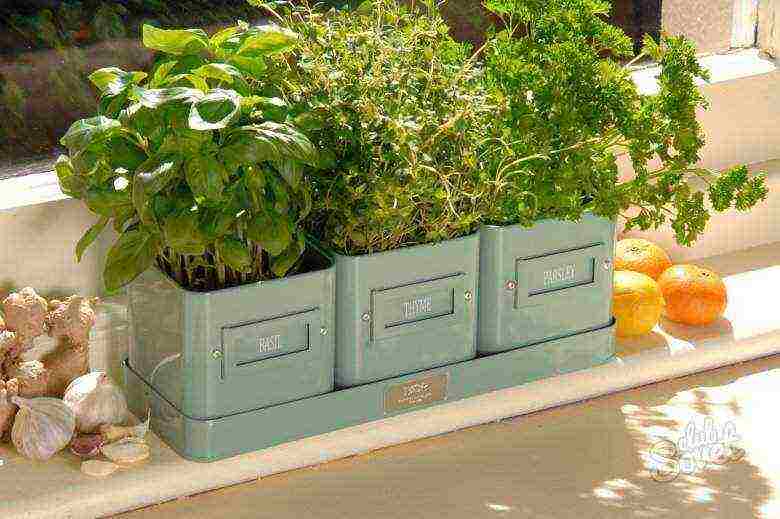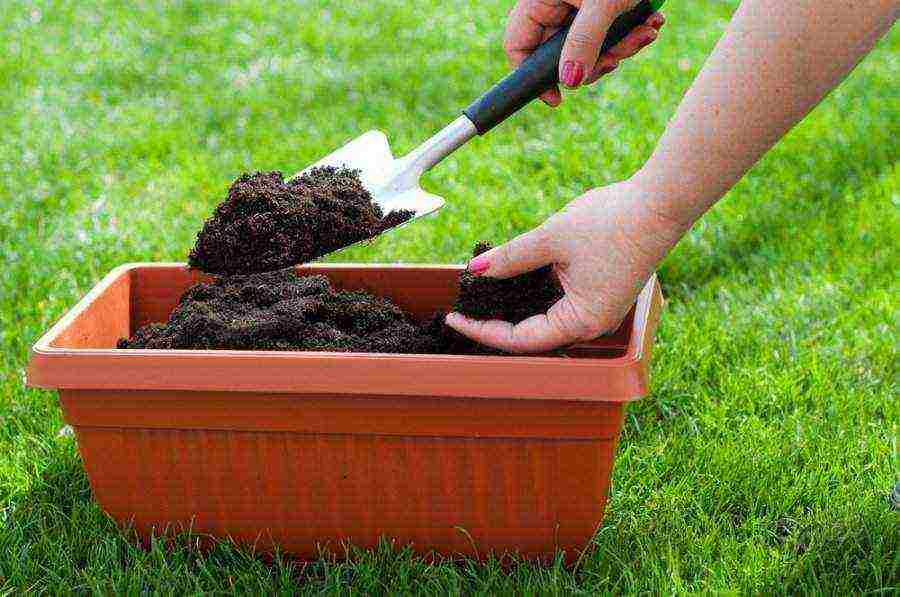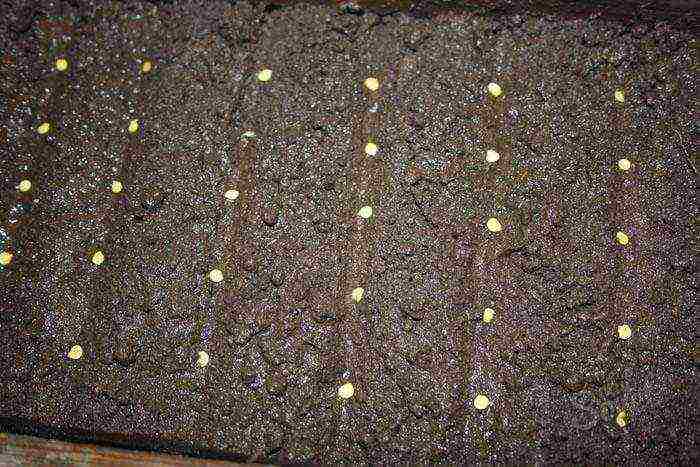Content
Growing sorrel on a windowsill
 Good afternoon friends!
Good afternoon friends!
A perennial herb sorrel has long and deservedly acquired a reputation for healing, rich in phytonutrients useful for the human body. This garden healer exhibits anti-inflammatory, antiscorbutic, tonic, stimulating digestion, hemostatic and tonic effects.
Before talking about how to grow sorrel on a windowsill I will briefly describe the composition of the plant and its beneficial properties.
Types and composition of sorrel
Although more than 200 varieties of sorrel are known in the world, most often gardeners grow ordinary sorrel (sour), which is a representative of the buckwheat family.
Plant shoots contain a whole complex of vitamins (B2, C, B1, carotenoids, thiamine, rutin, K, PP) and antioxidants, organic acids, including oxalic acid and its salts, dietary fiber, flavonoids, minerals (micro- and macro - elements), glycosides. Sorrel root is rich in tannins, resins, essential compounds, calcium oxalate, caffeic acid.
The benefits of sorrel
The leaves are successfully used as an effective remedy for vitamin deficiency, especially in the spring. Sorrel is recommended to be included in the diet of patients suffering from anemia and cardiovascular diseases, since plant components, especially phenolic substances and rutin, strengthen capillaries and exhibit anti-sclerotic properties.
Regular inclusion of sorrel in the menu, as a rule, as the main ingredient of green borscht or vitamin spring salad, improves appetite, enhances intestinal motility, activates digestion processes and helps the body to effectively get rid of processed products, decay, toxins and accumulated toxic substances.
How to grow sorrel on a windowsill and care for a plant
It is not at all necessary to wait for the beginning of the next season to enjoy sorrel leaves and prepare your favorite healthy dishes. In winter, you can perfectly grow sorrel on a windowsill or a glazed loggia.
Planting material
For forcing greenery, the rhizomes of a 2-4-year-old plant with a large number of growth buds are used. Sorrel is also grown from seeds. The following varieties develop most harmoniously in the conditions of an apartment: Maikop, Altai, Odessa broadleaf.
Lighting and temperature control
It is advisable to set up a mini-vegetable garden on the windowsill of a window facing south. However, sorrel is one of the few leafy greens that tolerates shading well. Based on this, it can be grown on the windowsills of the northern (northeastern, northwestern) windows.
In winter, when the daylight hours are already small, and most of the days are cloudy, so that the greenery does not stretch too much, you can install additional lighting. To do this, it is enough to place fluorescent lamps at a height of 60 cm.
The plant is cold-resistant, therefore, in the room where it is grown, the temperature can range from + 5 ° C to + 20 ° C. If you have a glazed balcony where there is no frost (although the greenery can withstand frosts down to -7 ° C), then containers with sorrel can be placed there.
Soil and planting capacity
The most favorable for plant development is slightly acidic, loamy, fertile soil. Sorrel grows well in drained peat soil. The soil mixture (if it meets these characteristics) can be brought from your site and calcined in the oven for about an hour (in order to surely get rid of the pathogenic bacteria living in it). Or you can use a commercially available universal weakly acidic substrate.
Any container is suitable for growing sorrel. It is best to put together a wooden box, in accordance with the size of the window sill or the space allotted on the loggia, but you can also use plastic containers, as well as flower pots from a variety of materials. Fill the bottom of the planting container with expanded clay or pebbles to create a drainage layer. It is desirable that the containers have openings for the removal of excess moisture.
Planting and leaving
The seeds are sown to a depth of about 0.8-1.1 cm, falling asleep in the grooves. The optimal distance between the rows is at least 7 cm, so you create good conditions for the development of plants. Depressions with seeds should be sprinkled on top with sifted ready-made substrate or humus. Sowing sorrel can be carried out every month all year round (in different containers). This will give you the opportunity to continually re-harvest.
Some time after the emergence of shoots, it is advisable to thin them out, leaving the shoots at a distance of about 4 cm from each other. Sorrel loves moisture, so make sure that the soil is always moist. Loosen the soil periodically with a fork or toothpick.
Top dressing is carried out with any universal complex fertilizer intended for indoor flowers, 1-2 times a month, diluting the solution in accordance with the instructions.
Forcing greens from the rhizome is carried out in boxes at a temperature of + 17- + 20 ° C. A root is planted in a planting container prepared as described above, the soil is abundantly moistened and periodically fed.
Harvesting
After you have succeeded grow sorrel on the windowsill, and the leaves have reached a height of 8-10 cm, they can be carefully cut with scissors, along with the petioles, taking care not to damage the growth buds. It is recommended to use the leaves after harvesting immediately, adding them to dishes - this way they retain the greatest amount of active biological components. See you!
Growing sorrel at home in winter is a great way to make up for the lack of vitamins in the body at this time of the year. This can be done in two ways.
Sorrel is a rather popular plant among the people. It has not only a pleasant taste, but also has medicinal properties: it improves digestion and counteracts the development of putrefactive processes in the intestines.
For growing sorrel in indoor conditions, it is best to use the Maikop, Altai and Odessa broadleaf variety.
General requirements for growing sorrel The plant tolerates shading well, therefore, for growing sorrel at home, you can set aside windows facing north or northwest, but it grows better on eastern windows.
The plant is also not picky about the temperature, it feels good in the range from 5 to 20 degrees. The soil for planting must be slightly acidic, rich in humus. Sorrel grows well in ready-made commercial soil for begonias.
Growing sorrel from rhizomes
It is good to use rhizomes for growing sorrel at home. In this case, the plant should grow in the garden for 3 years. They need to be dug out of the ground in the fall and stored in a cellar until planting.
Around the middle of December, the roots need to be pulled out and shortened by 10 cm, then planted in boxes with prepared soil to a depth of 15 cm tightly to each other. For the first week after planting, keep the roots at a temperature of 10 - 12 degrees, then increase it to 20 degrees.
First, after planting, the plant must be well watered. After rooting, watering should be carried out if necessary.After about a month, the sorrel will grow leaves ready to eat.
Growing sorrel from seeds
If you haven't dug up sorrel roots in advance, it doesn't matter, you can also grow it from seeds, but first check them for germination. To do this, pour water into the bottom of the saucer and pour seeds into it, leave them for a couple of days, use the sprouted seeds for sowing.
It is necessary to sow the seeds in the grooves to a depth of about 1 cm, make the distance between the grooves 6 - 7 cm. After sowing, fill the grooves with humus. If sorrel is sown at intervals of 30 - 40 days, then you can get its harvest all year round.
When seedlings appear, the plants should be thinned so that the distance between them is about 5 cm. You need to water the sorrel regularly so that the soil in the box is always moist. As a top dressing, I recommend using coffee grounds or sleeping tea - sprinkle them on the soil twice a month.
Such simple care will provide you with a harvest of juicy leaves until spring.
 Sorrel is one of the earliest vegetable plants that give its vitamin greens in the spring. It is also valued for its high content of useful acids, proteins and trace elements - iron and potassium. But you can surprise your family and pamper them with fragrant green borscht with fresh sorrel, even in the middle of a cold winter. This close relative of rhubarb does not skimp on the harvest of greens when planting for distillation in the cold season and will thank the caring hands of the gardener with a generous harvest.
Sorrel is one of the earliest vegetable plants that give its vitamin greens in the spring. It is also valued for its high content of useful acids, proteins and trace elements - iron and potassium. But you can surprise your family and pamper them with fragrant green borscht with fresh sorrel, even in the middle of a cold winter. This close relative of rhubarb does not skimp on the harvest of greens when planting for distillation in the cold season and will thank the caring hands of the gardener with a generous harvest.
Features of varieties of sorrel for forcing
Rhizomes for distilling sorrel leaves are dug from the garden in the fall and added to the cellar until planting. You can immediately send planting material to boxes and pots, but until the day the forcing process begins, they are left outdoors in the open air, insulating the container only on the sides - with straw, leaves.
If you got the planting material from friends, you should clarify which kind of sorrel you got into your hands - spinach or sour. Spinach produces greens faster, and its leaves are several times more powerful than their sour counterpart. The peculiarity of the second is that it is rich not only in malic and citric acid, but as it ages, it accumulates oxalic acid, which is unhealthy to abuse. Based on this, it should always be remembered that it is better to refrain from using such sorrel for those who suffer from kidney diseases, intestinal inflammation, and salt metabolism disorders in the body.
Sorrel planting technology for forcing
The rhizome for distillation is recommended to be taken from two-year-old plants, and three-year-olds are also used. For forcing sorrel, it is better to use bridge planting technology. This means that planting material in your improvised bed in a box should be placed very tightly, side by side to each other, so that there is practically no free space between the rhizomes. This method is used not only to save space - with its help the leaves grow thicker and become softer in taste. Its delicate sourness will not spoil the flavor of the salad; such products can be used as a filling for brass pies.
It is necessary to ensure that there is a sufficient thickness of the soil layer in the boxes for distilling greenery. For sorrel, this figure is approximately 10-12 cm.
The advantage of sorrel is its undemandingness to sunlight. It will grow well in a dimly lit area of the house. Therefore, it is not scary to leave it for forcing greenery on the window sills and balconies that face the north side of your house or are shaded in the daytime by tall trees on the street. But after planting rhizomes and watering the beds, the box does need to be sent to a dark place for a while.
Caring for planting sorrel at home
For good growth of greenery, plantings must provide certain conditions:
• first of all, it is important to monitor the condition of the soil - the earth should not dry out;
• humidity and air temperature matter - it should not be dry, and the thermometer should not be allowed to fall below + 18 ° С or rise above 20 ° С;
• pay attention to the growth rate of leaves: when it is unreasonably low, it can be increased by applying fertilizers, for example, with a weak urea solution.
How do you know that a plant is developing normally? Under favorable conditions, the first harvest can be obtained two and a half to three weeks after planting sorrel rhizomes. The stock of nutrients in the planting material is sufficient for the growing season for about 2 months. With proper feeding from one planting, the harvest of greens can be harvested at least 3 times. But after such productive work, the rhizome is depleted and loses its strength, so it cannot be reused for forcing leaves.
Many people grow sorrel at home. You can also follow the example of our grandmothers and arrange a garden bed on the windowsill. Sorrel will always be at hand, besides, green plants release oxygen and purify the air.
During the germination period, the plant needs sunlight, but later it perfectly tolerates shade and even needs it. For planting sorrel, you should choose a bright and well-ventilated area. In this case, it is a window sill, so there will definitely not be any problems with ventilation. Experts recommend growing plants on windowsills that face west or east.

First you need to acquire soil. You can buy it or just dig up at your dacha. When buying, make sure that the soil is intended specifically for garden plants, and not for flowers. You will also need one or more seedling boxes. Plastic or wooden options with holes in the bottom are suitable. Please note that they must fit on a windowsill. Pour small pebbles at the bottom of the box, then put coarse sand and soil directly.

Sorrel, which grows for three years, is ideal for planting. Dig roots out of the ground in October and store in a cool dry place until planting. In December, take the roots and shorten them by 10-12 cm. Then carefully plant them in boxes with prepared soil to a depth of 15-17 cm. To prevent the rosettes of leaves from growing too much, plant them tightly to each other.

Keep the temperature in the 10-12 ° C range for a week, then turn it up to 18-20 ° C. Water the roots well for the first time after planting. Subsequently, water the sorrel as the soil dries. After 30-35 days, the plant will be ready to eat. If you take proper care of your sorrel, you can harvest three crops in a row before April!

Another option is to germinate the seeds in the soil. Be sure to check them for quality before planting. To do this, take a saucer and pour water on the bottom. Put a pinch of seeds in there. Place the saucer in a warm place and after two days see if sprouts have appeared or not. Moisten the soil and place the sorrel seeds in small holes 1 cm deep. The distance between the beds should be about 6-7 cm.

Use the following formula to fertilize sorrel. Take 30 g of nitrate solution, 40 g of superphosphate and 20 g of potassium chloride. Dissolve these ingredients in 10 liters of water. Use 0.5 liters at a time. As fertilizers, coffee grounds, onion peel decoction, or dormant tea are also suitable. Feed the sorrel with fertilizer twice a month.

Now you know how to grow sorrel on a windowsill. Remember to water and fertilize the plant regularly. With proper care, sorrel will grow very well and quickly!


